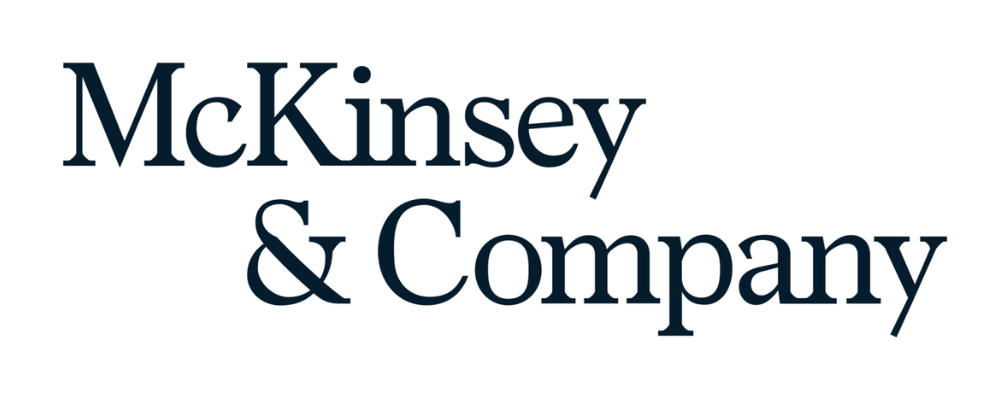
Marketing is at a pivotal moment, with data and new technology propelling rapid changes and expanding opportunities for growth. The promise is enormous, with the economic value of generative AI (gen AI) potentially reaching $4.4 trillion, with a large percentage of that value set to come from marketing and sales. Amid the excitement about the speed of innovation, there’s also a sense of uncertainty, with many companies unsure about how to navigate this brave new world.
Two companies at the forefront of this transformation are Salesforce and Solo Brands. Salesforce has long been at the leading edge of data management and technology, and earlier this year launched its new Einstein AI tools to help sales teams better understand their customers and help marketing teams better personalize campaigns at scale. Solo Brands, which was founded in 2011 and makes innovative outdoor products such as smokeless fire pits and foldable kayaks, recently launched an AI-powered chatbot that helps customer service agents focus on priority issues and improved customer satisfaction.
At Salesforce’s recent Connections conference, Salesforce president and chief marketing officer Ariel Kelman and then-Solo Brands chief digital officer Jenna Posner sat down with McKinsey partner Lisa Harkness to discuss how marketers can use a combination of technology and human insights to fuel growth and customer engagement. The following is an edited transcript of their conversation.
Lisa Harkness: How are AI and gen AI playing a transformative role in the future of marketing, especially when it comes to customer experience?
Ariel Kelman: If you look at the first wave of predictive AI, marketing was ahead of other parts of business, using machine learning models for things like scoring leads and defining segments. The initial adoption of gen AI is much more heavily in service and sales. Gen AI is really good at summarizing things, doing generative search, and finding information across multiple documents. If someone asks a question and you have 500 product manuals out there, gen AI can help you get the answer easily.
In marketing, we live in a world that’s a little bit of art and a little bit of science. We’re still in an early stage of applying gen AI to marketing. My biggest advice is to take advantage of gen AI features in your SaaS [software-as-a-service] applications first, but also get data organized and ready. You need to really have that great database of customer data, which as marketers we’ve always wanted.
Lisa Harkness: When you think about customer engagement and getting data ready, how do you think about using AI or gen AI?
Jenna Posner: We’ve put a gen AI chatbot in the market for customer service. Our prior chatbot was only as efficient as the human capital that we put into it. The way that these chatbots work is you’ve got to predict these conversational flows. You have to build an entire decision tree to manage this experience for the consumer, and it’s all very manual. It takes evaluation and iteration for that chatbot to really perform. When it doesn’t perform, you get an escalated case and an angry customer. It’s just more trouble than it’s worth.
The implementation of a gen AI chatbot took the pain of all that work out of the maintenance of the experience. We saw a 30 percent decrease in workload by leveraging this gen AI chatbot. The chatbot alone was able to solve over 40 percent of the cases that it faced. It freed up our customer service representatives so they could take on those cases that required human intervention and empathy; they were able to engage in creative problem solving that can’t really be done by a chatbot.
What’s so great about putting an AI chatbot in the market is that it is measurable. We can see cases close. We can estimate time saved. We can put a dollar value on the implementation.
Lisa Harkness: The customer service model can be a triple threat in terms of what you can see and measure. You get a decrease in the amount of time spent, an increase in resolutions, and an increase in loyalty. But it’s never just about technology, right? How do you effectively pair the latest technology and human insights to create the right impact?
Ariel Kelman: Asking “What are we going to have generative AI do, and what are we going to have people do?” is the wrong framing. AI is a tool that can make people very productive—for example, in writing, creative design, or testing copy. They’ll do more in less time. Most of what we’re seeing involves a “human in the loop,” where people’s productivity is accelerated with gen AI, but they’re still applying judgment.
Lisa Harkness: How should companies be thinking about gen AI in the future, especially when you pair it with a human interaction?
Jenna Posner: This is really about efficiency. It’s about driving more value out of current disciplines within an organization. I’ll give you a recent use case. At Solo Brands, we have SEO [search engine optimization] coordinators who research, check our rankings, look for key words, tag, geotag, and do all of this work. It takes them a lot of time. In the time between when they do research and when they implement a change, the landscape has shifted, and they’re already behind.
Meanwhile, I’m trying to sell against some of the best retailers in the world, and I want to figure out how to get my pages to rank above theirs. Pixera.ai evaluates the SEO value of both our and our competitors’ pages from a content and a key word perspective. It can dynamically change the content on the front end and our metadata on the back end to make sure that we’re in the most competitive position possible. That means I now have SEO coordinators with tools to expedite and enhance their agenda 24 hours a day, seven days a week. It makes us more efficient and makes the discipline more valued in the business.
Ariel Kelman: The idea that the vast majority of office workers need to become prompt engineers is kind of missing the point of a good SaaS product, which is to simplify that complexity.
Think about the approach we’ve taken with Prompt Builder [Salesforce’s gen AI product to assist in generating workflow]. If there are ten types of follow-up emails that you’d like your salespeople to do based on different scenarios, you would create ten different templates with all the instructions, guidelines, and information to pull in. Our product makes that template available to people, with a button that says, “Reply to email.” When they click, our Einstein AI engine will figure out which template to use. The rep is just reviewing what’s been done, and hopefully 70 or 80 percent of the work’s already been done for them. That intelligence of how to get that great result out of a large-language model should not be something that everyone must do if we do our jobs right as a software provider.
Lisa Harkness: How do you think about leveraging data to get more surgical on reaching the right person?
Jenna Posner: A lot of brands need to figure out how to diversify the promotional landscape. There’s tech that’s out there, such as products by Session AI, that are leveraging AI incredibly well. They have a five-click propensity modeling solution. They determine whether a customer is either unlikely to buy, highly likely to buy, or on the fence. This allows us to figure out anonymously what cohort of customers on our site really need a promotion to cross the finish line.
As a retailer, I see an opportunity to save margin for consumers who are highly likely to buy. I also have an opportunity to not devalue the brand for consumers who have no intention to buy. It’s great that I now have this control group in a central cohort where I can actually measure the value of how these promotions have been delivered. Also, it’s behavior based and not identity based, which is nice. I think anonymous data personalization is going to be one of the biggest things over the next couple years.
Lisa Harkness: What advice do you have for the leaders driving the next generation of marketing?
Jenna Posner: I think there’s a real opportunity to look inside your existing tech stack and educate yourself on the AI that you’re already leveraging. Do you have optimized send times on your email campaigns? You’re using AI. If your executive leaders understand that you’re already using it, you can measure it and show the value. AI then becomes a thing that’s adding a lift to your business already. Tease out those AI use cases that are on the market today and educate your crew. Now is the time to be testing and partnering and pushing the boundaries. That’s what we’ve been doing, and it’s been paying off.
Lisa Harkness: We know there’s only a very small percentage of companies that are consistently deploying gen AI. What is holding others back?
Ariel Kelman: It’s people not knowing what use cases to start with. At Salesforce, we just released our full gen AI platform at the beginning of April, and we’re giving people the tools to get started. Like with any new functionality, you have to start running experiments, looking at different use cases, and interviewing users. There are smaller start-ups that are experimenting with generative AI for sales and commerce and marketing. The more that they invest in getting all their data together, the more flexibility they’ll have to start running experiments with different tools.
Jenna Posner: There are communities popping up all around to help educate people. A few industry allies and I founded something called the Retail AI Council, which is where industry leaders come together to help be a reality check for what’s really out there and what’s working. It’s a place to create a hub for content and use cases. Obviously we’re not the only ones. I would suggest that those who want to learn more try to find some resources and talk to each other because we’re all figuring this out. It’s changing so quickly, and we can be each other’s best resources.
McKinsey has a long-standing alliance with Salesforce to drive impact together for clients.
“Our firm is designed to operate as one—a single global partnership united by a strong set of values. We are equally committed to both sides of our mission: attracting and developing a talented and diverse group of colleagues and helping our clients create meaningful and lasting change.
From the C-suite to the front line, we partner with clients to help them innovate more sustainably, achieve lasting gains in performance, and build workforces that will thrive for this generation and the next.”
Please visit the firm link to site


